Las Fallas Festival In Valencia
Advertisements:
[The Falles (Valencian: Falla; Spanish: Fallas) is a traditional celebration held in commemoration of Saint Joseph in Valencia, Spain. The term Falles refers to both the celebration and the monuments created during the celebration. A number of towns in the Valencian Community have similar celebrations inspired by the original in Valencia.
There are different speculations regarding the origin of the Falles festival. One suggests that the Falles started in the Middle Ages, when artisans disposed of the broken artifacts and pieces of wood they saved during the winter by burning them to celebrate the spring equinox. Valencian carpenters used planks of wood called parots to hang their candles on during the winter, as these were needed to provide light for the carpenters to work by. With the coming of the spring, they were no longer necessary, so they were burned. Over time, and with the intervention of the Church, the date of the burning of these parots was made to coincide with the celebration of the festival of Saint Joseph, the patron saint of carpenters.
This tradition continued to evolve. The parot was dressed with clothing so that it looked like a person; features identifiable with some well-known person from the neighbourhood were often added as well. To collect these materials, children went from house to house asking for una estoreta velleta (an old rug) to add to the parot. This became a popular song that the children sang as they gathered all sorts of old flammable furniture and utensils to burn in the bonfire with the parot. These parots were the first ninots. With time, people of the neighbourhoods organized the building of the falles and the typically intricate constructions, including their various figures, were born.
Until the beginning of the twentieth century, the falles were tall boxes with three or four wax dolls dressed in fabric clothing. This changed when the creators began to use cardboard. The fabrication of the falles continues to evolve in modern times, when the largest displays are made of polystyrene and soft cork easily molded with hot saws. These techniques have allowed the creation of falles over 30 metres high]. – Wikipedia
There are different speculations regarding the origin of the Falles festival. One suggests that the Falles started in the Middle Ages, when artisans disposed of the broken artifacts and pieces of wood they saved during the winter by burning them to celebrate the spring equinox. Valencian carpenters used planks of wood called parots to hang their candles on during the winter, as these were needed to provide light for the carpenters to work by. With the coming of the spring, they were no longer necessary, so they were burned. Over time, and with the intervention of the Church, the date of the burning of these parots was made to coincide with the celebration of the festival of Saint Joseph, the patron saint of carpenters.
This tradition continued to evolve. The parot was dressed with clothing so that it looked like a person; features identifiable with some well-known person from the neighbourhood were often added as well. To collect these materials, children went from house to house asking for una estoreta velleta (an old rug) to add to the parot. This became a popular song that the children sang as they gathered all sorts of old flammable furniture and utensils to burn in the bonfire with the parot. These parots were the first ninots. With time, people of the neighbourhoods organized the building of the falles and the typically intricate constructions, including their various figures, were born.
Until the beginning of the twentieth century, the falles were tall boxes with three or four wax dolls dressed in fabric clothing. This changed when the creators began to use cardboard. The fabrication of the falles continues to evolve in modern times, when the largest displays are made of polystyrene and soft cork easily molded with hot saws. These techniques have allowed the creation of falles over 30 metres high]. – Wikipedia
A person prepares for the burning of the [Ninot] caricatures during the last day of the [Fallas] festival on March 19, 2012 in Valencia, Spain. The festival, which runs March 15 – 19, celebrates the arrival of spring with fireworks, fiestas and bonfires. (Photo by Xaume Olleros/Getty Images)
Combustible [Ninot] caricatures burn during the last day of the [Fallas] festival on March 19, 2012 in Valencia, Spain. (Photo by Xaume Olleros/Getty Images)
Firemen spray water while a combustible [Ninot] caricature burns in the background during the last day of the [Fallas] festival on March 19, 2012 in Valencia, Spain. (Photo by Xaume Olleros/Getty Images)
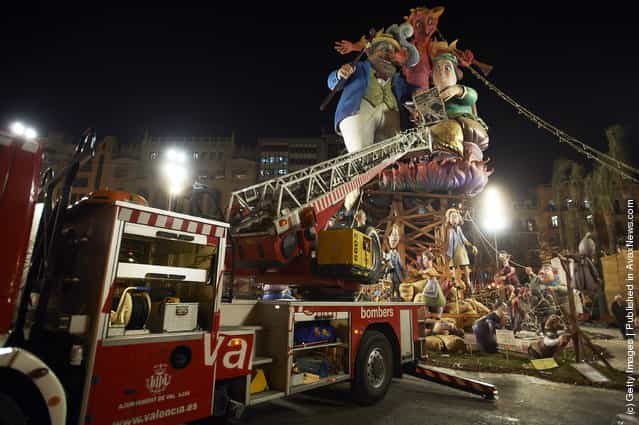
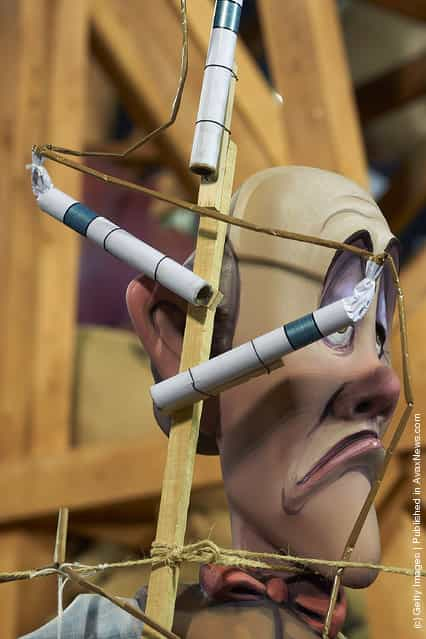
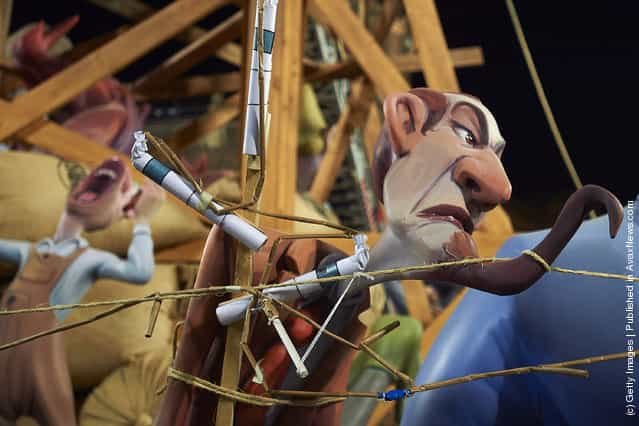
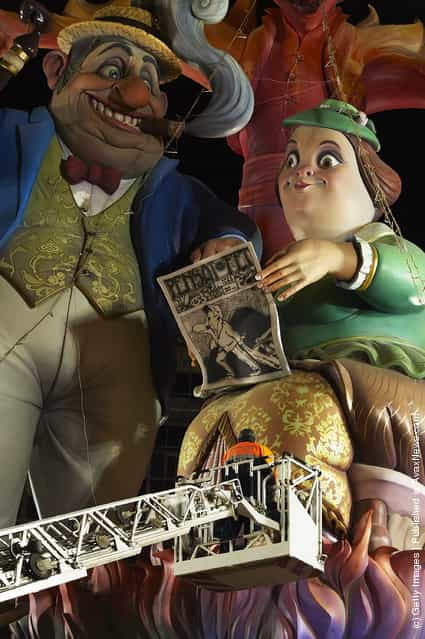
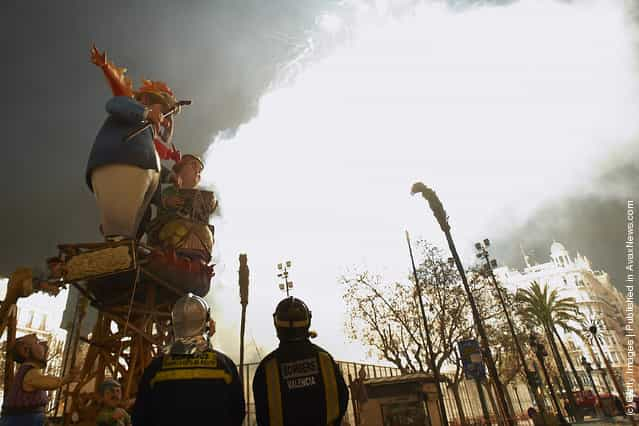

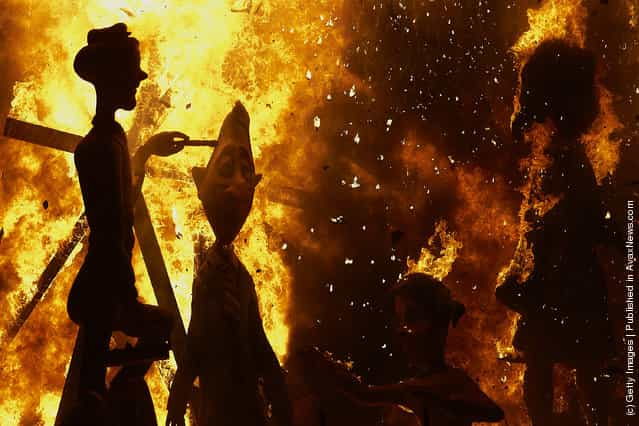
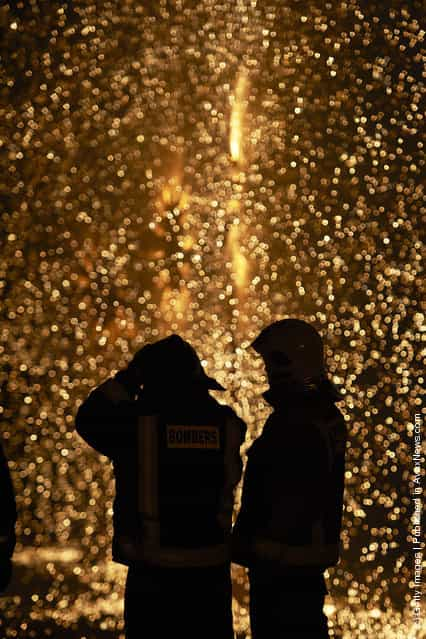

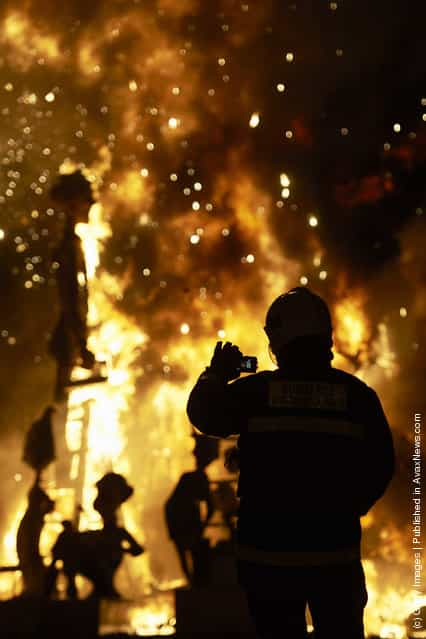

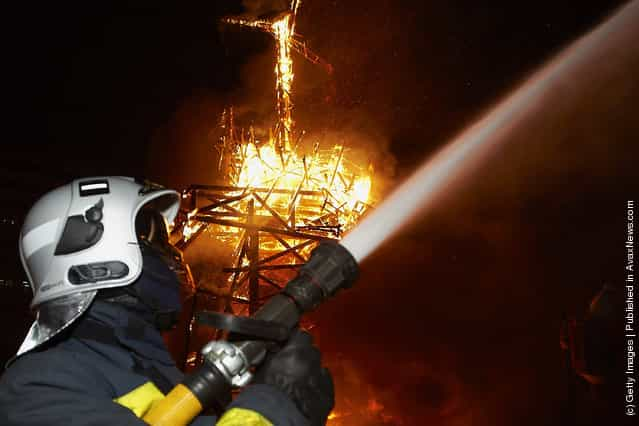
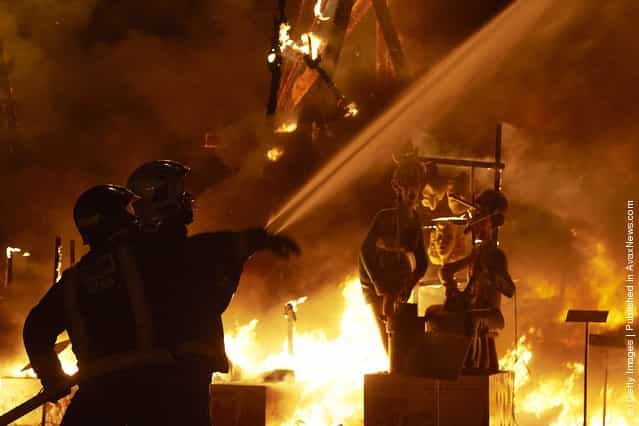
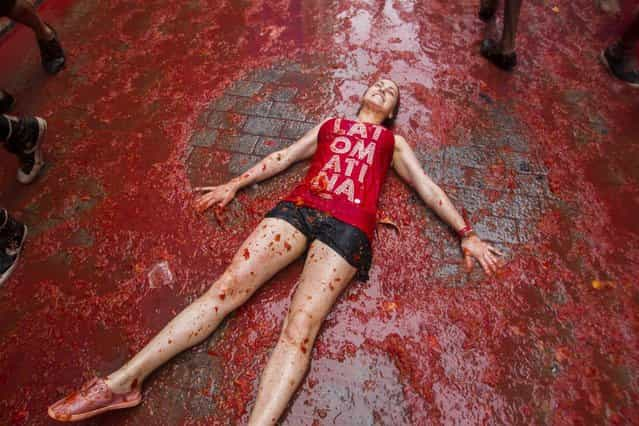
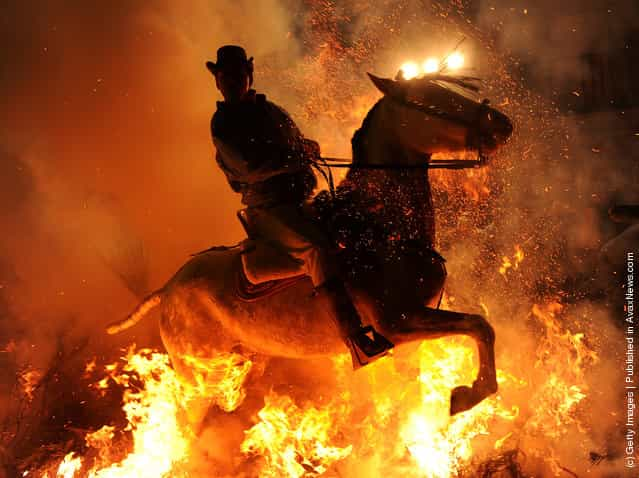
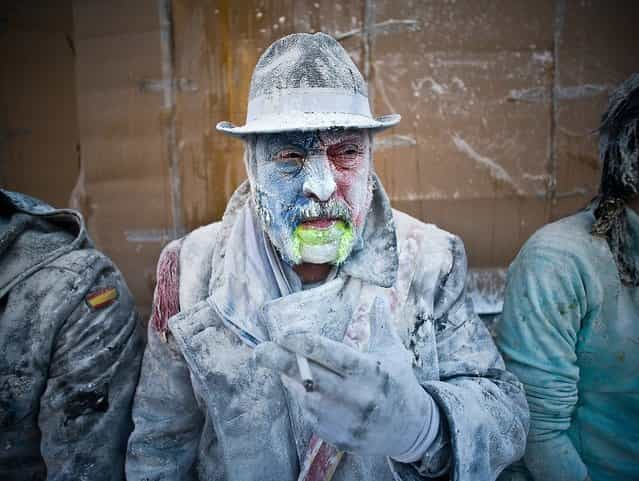
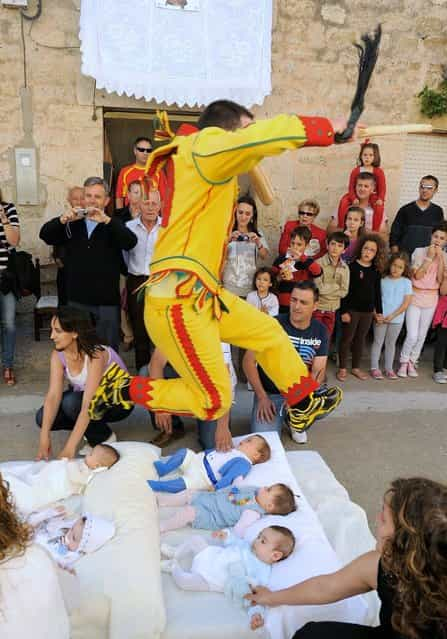
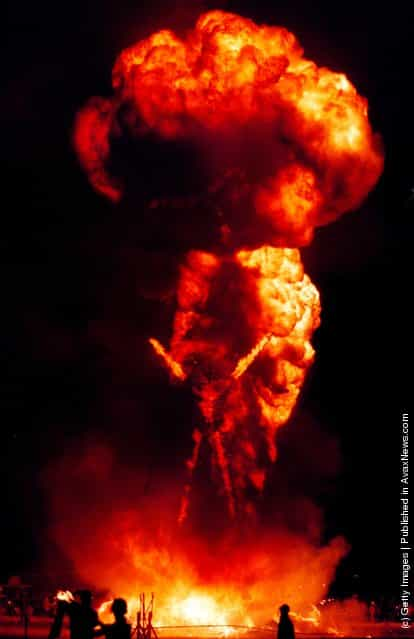
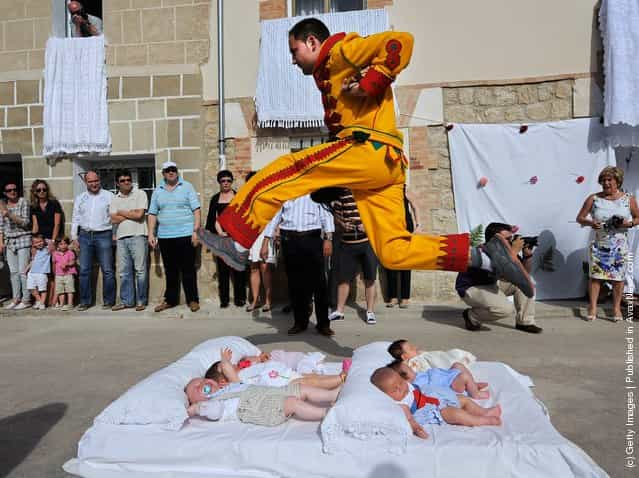
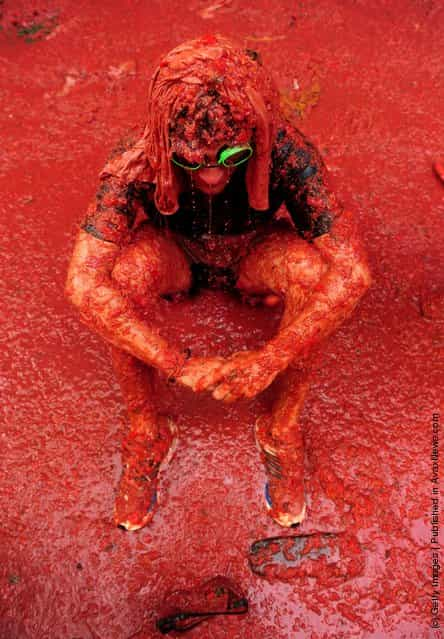

![Rare [Hybrid] Total Solar Eclipse Rare [Hybrid] Total Solar Eclipse](http://img.gagdaily.com/uploads/posts/fact/2013/short/00010c55_medium.jpg)






